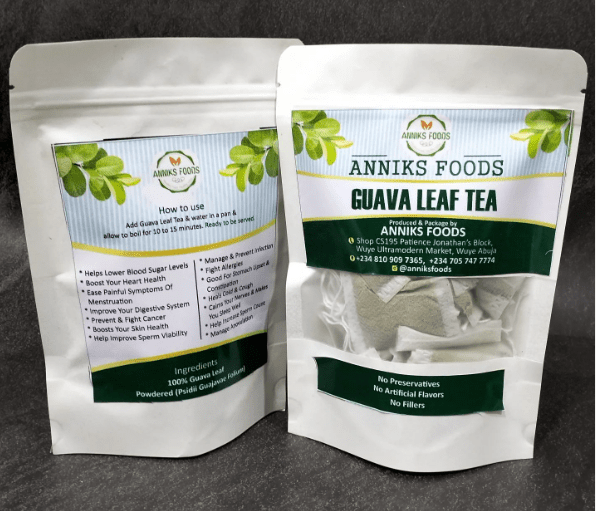If you’re anything like me, you’ve had a dozen half-built ideas sitting in your notes app.
A newsletter that never made it to issue #2. A course “outline” that’s really three bullet points and a vibe. A fitness plan that peaked at buying shoes.
Starting is exciting. Finishing is a different skill.
What’s helped me most isn’t more willpower—it’s building small systems that make follow-through automatic.
Think of them like bowling bumpers: they don’t make you a pro, they just keep the ball out of the gutter long enough to hit some pins.
Here are nine tiny systems I rely on to actually finish what I start.
1. Create a start-line ritual
When I trained for my first half marathon, I learned something obvious but powerful: the hardest part wasn’t the run, it was getting out the door.
So I built a 90-second ritual—fill bottle, tie shoes, start playlist, step outside.
No debate. No vibes check. Just sequence.
I use the same pattern for creative work. My “start-line ritual” is: open the doc, set a 25-minute timer, write one ugly paragraph. That’s it.
The ritual tells my brain, “We’re in motion,” and momentum does the rest.
Design yours:
- Decide the first three actions that begin the work (e.g., open file → set timer → write one sentence).
- Keep it under two minutes.
- Trigger it at a consistent cue (time of day or location).
It’s simple, but rituals shrink the gap between intention and action. You don’t need motivation to begin; you need a switch you can flip.
2. Use one-tap capture (so nothing leaks)
Projects die from “micro-leaks”—ideas, to-dos, and decisions that never get captured, so they never get done.
I treat capture like plumbing: leak-proof or bust.
My setup is intentionally boring:
- One inbox for tasks (a single list app).
- One quick capture gesture (I use my phone’s widget; on desktop it’s a global hotkey).
- One daily sweep to sort that inbox into projects.
If I’m mid-run and remember I need to follow up with Sam, it goes straight into that inbox.
If I have an idea for a section in an article, same place. This prevents “I’ll remember later,” which is usually code for “I’ll never think of this again.”
Make it one tap, not five.
The easier the capture, the fewer ideas you lose—and the more threads you can reliably close.
3. Always define the next visible action
A project stalls when the next step is ambiguous. “Finish website” isn’t a task; it’s a fog. The mind hates fog.
At the end of every session, I write one next visible action at the top of the doc, like a baton I pass to tomorrow-me: “Draft the ‘About’ paragraph,” “Export three hero images,” “Email Rachel for testimonials.”
When I sit down again, there’s no friction—just a clearly lit step.
This tiny habit compounds. Ten sessions with one crisp next action beats three heroic all-nighters every time.
I’ve talked about this before, but it’s the simplest lever I know for consistent progress.
4. Schedule a daily ship window
Most “almost finished” projects are one decisive push away.
To force that push, I’ve carved out a daily ship window—a 30-minute block dedicated to shipping something: a paragraph to an editor, a pull request, a decision to the team, a prototype to a friend for feedback.
The rule: something leaves the nest by the end of that window. Not perfect—published. Not gorgeous—gone.
This flips the default. Instead of polishing forever and hoping to feel ready, I ship routinely and let reality give me feedback.
Frequent small finishes train you to finish bigger things.
Set yours at the same time each weekday.
If nothing is truly shippable, ship an internal checkpoint: a summary email, a progress note, or a draft saved to the project folder.
The muscle is the send.
5. Do a weekly friction audit
Buddhist teachings talk a lot about removing unnecessary suffering.
In projects, “suffering” is usually friction—tiny points of resistance that multiply until you ghost your own work.
Once a week, I run a friction audit:
- Where did I stall?
- What micro-step produced dread?
- What did I avoid, and why?
Then I fix one point of friction:
- Create a template.
- Pre-write email intros.
- Set default document styles.
- Save a “starter stack” (folders, filenames, outlines) so a new project takes 60 seconds to scaffold.
Eliminate one splinter a week and the path gets smoother. Kaizen for your workflow.
6. Use the two-minute rule—then calendar the rest
If something takes less than two minutes, I do it immediately.
That stop-start tax of parking small tasks is expensive: they clog your brain, your list, and your day.
For anything longer, I don’t let it live as an “open loop.” I calendar it.
The calendar entry includes the verb (“Draft intro”) and the artifact I’ll produce (“~300 words”).
If it doesn’t earn a time slot, it doesn’t pretend to be a priority.
This avoids the swamp of eternal to-dos. You either do it quickly or respect it with time on the calendar.
Middle ground kills follow-through.
7. Keep a scoreboard you can’t ignore
We do what we measure. When I’m serious about finishing something long, I set up an obnoxiously visible scoreboard—a simple wall tracker or a persistent digital counter.
For a book chapter, it might be daily word count and “days with progress” streak.
For a fitness block, it’s sessions completed per week. For a product build, it’s “tickets closed” and “demo shipped” checkmarks.
Two guidelines:
- Make progress binary. Did I ship a version today: yes/no?
- Make it public-ish. Visible to your team, or at least to future-you (a note taped to your monitor works).
When your scoreboard stares back, excuses have less room to grow.
8. Write handover notes to future-you
Ever open a project, stare at it, and think, “What was I doing?”
Context switching steals more momentum than we realize.
I end each session with handover notes:
- Current status: “Outline complete; intro messy.”
- What I learned: “Section 3 needs a case study.”
- Next visible action (from point #3): “Draft the ‘Why now’ paragraph.”
- Blockers: “Waiting on Sarah’s analytics; check Wednesday.”
It takes two minutes and saves ten the next day.
More importantly, it protects the fragile thread of a project’s narrative—so every return isn’t a cold start.
9. Install a stop-loss and a recovery buffer
Follow-through isn’t just finishing; it’s knowing when not to—and how to bounce back when you stumble.
Two tiny systems help:
Stop-loss. Before I start, I define the conditions to quit or pivot. For example: “If this article doesn’t land with two test readers by Friday, I’ll rewrite the angle,” or “If I haven’t shipped a usable prototype in three weeks, I’ll shelve and review.” This prevents sunk-cost spirals and frees attention for winnable battles.
Recovery buffer. I build one “catch-up” block into my week—90 minutes labeled Recovery. No new work allowed. I use it to close tiny loops (send invoices, rename files, finish that last paragraph) or to realign a slipping plan. Missing a day doesn’t become missing a week when you have a scheduled bounce.
Finishing thrives on forgiveness plus guardrails. These two give you both.
A few bonus habits that tie it all together:
- Environment presets. I keep a “writing” desktop (apps, windows, fonts) saved as a layout. Switching work modes is one shortcut away. No fiddling.
- Tiny accountability. One friend gets a Friday note: what I shipped, what I’m shipping next. The social contract is light but real.
- Identity cues. I keep a sticky on my monitor: “Finishers finish.” Cheesy? Maybe. But we become what we rehearse.
Why these tiny systems work
In mindfulness, there’s a concept called zanshin—the calm, ongoing attention that persists before, during, and after an action.
Follow-through is essentially zanshin for modern work.
You reduce unnecessary novelty, make the path obvious, and keep attention alive across days.
Systems do three things your future-self will thank you for:
- Reduce decisions. Rituals, next actions, calendars—less choosing, more doing.
- Increase feedback. Ship windows and scoreboards create a loop: act, see, adjust.
- Protect momentum. Handover notes, recovery buffers, and friction audits keep the flame from flickering out.
You don’t need to adopt all nine at once. Pick two and run them for a week. Notice what happens when you don’t leave progress to your mood.
Final words
Most people think finishing is about intensity. In my experience, it’s about consistency—and consistency is easier when your environment does half the work for you.
Build tiny systems, keep them stupid-simple, and let them carry you past the 80% mark where most projects go to die.
If you try any of these, start with the start-line ritual and the next visible action.
Those two alone will change your output this month.
And if you’re reading this thinking, “I’ve already started three things this week,” perfect. Now it’s about finishing one. Then another.
Then, before you know it, finishing becomes your default—not the exception.
Credit: www.experteditor.com.au
Stay ahead with the latest updates!
Join The Podium Media on WhatsApp for real-time news alerts, breaking stories, and exclusive content delivered straight to your phone. Don’t miss a headline — subscribe now!
Chat with Us on WhatsApp







